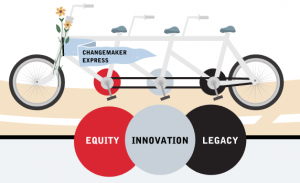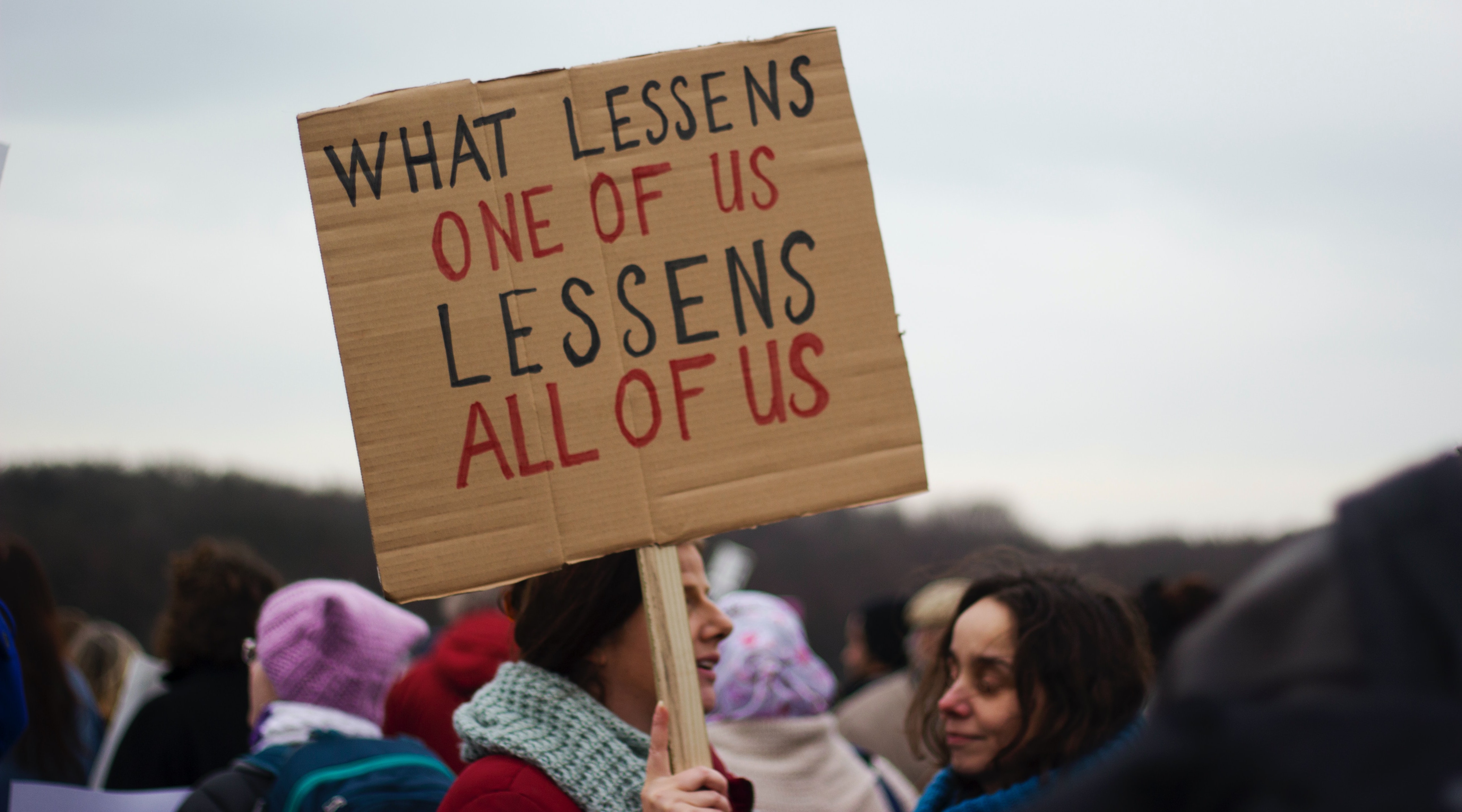By The Joining Vision and Action Team
JVA’s team has been reflecting lately on the most critical aspects of our work, and on what we believe sets us apart. Last week, we talked about what innovation means to us in this challenging time. This week, team members share what equity means to them and how our thinking about equity has evolved in light of the pandemic.
We begin with the following acknowledgment: COVID-19 is not impacting people equally. We recognize that the ways individuals and communities are affected by the pandemic are, to a large degree, a reflection of their position in society and the inequities they faced prior to the outbreak.
Thus, we realize that the organizations we serve are handling issues caused by COVID-19 but compounded by other challenges particular to the populations they serve.
What does equity mean to you in terms of JVA’s work?
Evaluation
Research and Evaluation Associate Aaron Schonhoff: I view it as our chance to shine a light on those who are marginalized and their challenges and the barriers they face.
Managing Director/Director of Research and Evaluation Jill Iman: To me, equity in JVA’s work is all about recognizing and honoring where each individual and organization is (and has been and is headed), and not approaching things with a one-size-fits-all approach. Throughout our work, we have always strived to be mindful of how and in what ways the intersections of who and what we are all bringing to the table create unique and valuable opportunities, while also acknowledging where and how privilege may show up.

Jill Iman: “We recognize we are all learning.”
Our approach of being partners in community change (not just “consultants”), allows us the flexibility and the space to walk alongside those we are able to work with.
Specific to evaluation, this also means we are recognizing that we are not the “experts”—the communities and individuals we are engaging are. Our job is often to allow the space for their voices, perspectives and experiences to inform decision-making (whether at the level of programming, organizations, community or broader). And beyond incorporating equity practices into our evaluation approaches, as evaluators and researchers, we need to pay close attention to how our methods, analyses and interpretation may also work to be in service of advancing equity in and of itself.
I think it’s also important to note that throughout all our work, using an equitable lens also means that we recognize we are all learning and that there is no one right way to “do equity.” It’s much more nuanced, and we owe it to those we work with and ourselves to acknowledge that.

Silvia Solis: “It means meeting people where they are.”
Bilingual Evaluation and Research Associate Silvia Solis: To me, equity means removing barriers so that individuals may be able to access resources and, ultimately, live well, be safe and be healthy. In terms of my work, more specifically, it means meeting people where they are in terms of the methods I use to communicate with them.
Also, and potentially even more importantly, it is about conveying to my clients and others around me what may be some gaps in understanding, service provision and communication approaches that make their work and efforts ineffective with any given group, and providing recommendations informed by research and communities themselves that help bridge those interpersonal, cultural or systematic gaps.
Grantwriting
Senior Grantwriter Katalin (Kat) Wishart: Through grantwriting, we help bridge the equity gap for the populations our clients serve. Our clients provide high-quality, culturally responsive services for people who would otherwise not be able to afford them.
Imagine simply not going to the doctor or the dentist because you can’t afford it. Or never experiencing the opportunity to create art. We help our clients receive foundation and other grant support so they can bring essential programs to people who would otherwise simply go without essential services to meet their basic needs.
Senior Resource Development Associate Lisa Cirincione: When we partner with clients, we do our best to suss out what they need and customize our services appropriately. For example, a nonprofit with a small staff may need more support identifying grant opportunities and help putting together letters of introduction because they wear so many hats that outsourcing those tasks just makes more sense.

Erin Shaver: “This … is why we do what we do.”
Director of Grants Erin Shaver: Equity means we don’t always have a level playing field. This shows up in our work every day and is why we do what we do, and has been very acute since the pandemic.
I’ve been lucky in my life and know my privilege … I am lucky for so many things, especially be healthy, to have an education, and a career in which I can work from my home. I also feel the real strain of working from home while caring for kids and partner working out of the home. I feel deeply empathetic to many who are struggling right now.
Our clients are supporting so many who are unfairly feeling the inequitable burdens of the pandemic and this is why we write grants: to help them.
Planning and facilitation

Nora Welch: “It’s thinking about levels of access and applicability.”
Director of Strategic Planning and Communications Nora Welch: In strategic planning, equity means adding an extra layer of investigation, consideration and implementation.
It’s taking the organizationally led initiatives (per the organization’s vision and mission) and thinking, “OK, now we have our destination. How do we make sure we can help everyone get there?”
It’s thinking about levels of access (how will people be able to engage us) and applicability (how have we made sure that what we’re providing is relevant for our entire community). And, it’s also about getting feedback—before, during, after—to help refine the process and to be more responsive, no matter the external environment.
How has your thinking about how equity shows up in our work evolved since COVID-19 pandemic?
Evaluation
Jill: More than anything, the current state of the world is highlighting the need for equity to show up more explicitly in how we work. We were aware of, and working to address with our clients, inequities before the pandemic, but to see these only be exacerbated is horrifying.
Whether we’re seeing how the consequences of the crisis might show up in education, health care, women in the workplace, childcare access, etc., or in terms of the inequitable effects based off of identity (e.g., race, income), we need to call these things out and recognize our individual and collective roles in addressing them.
In other words, now, more than ever, equity (along with innovation) needs to be at the forefront in terms of how we are working and in our expectations of others.
Silvia: I think it has simply emphasized some of the things that I wrote above: the need for realizing that communicating with people in an effective way is not done using a cookie-cutter method but, instead, through a more authentic and genuine way.
While global crises such as COVID-19 unveil the inequities that exist in our societies, they also have a way of underscoring our shared humanity—the fact that we are all vulnerable, and we fear the unknown and uncertainty, and we hold our families and loved ones dear. Realizing these shared experiences has helped reenergize the humanity in me, and, thus, make me more receptive to where other people are coming from, to see them as the individuals they are and not just one more participant.
Grantwriting
Kat: Our clients serve people with the highest needs in Colorado. They heavily rely on the basic supports that school, childcare, rec centers and other community organizations provide. When all of these basic supports vanished, their lives were completely upended.
Working families rely on childcare and schools so they know their children are safe during the day. Children rely on them for mental, physical and social stimulation so they can thrive. Many of the children our clients serve are growing up in under-resourced areas that have high rates of crime and now, high rates of coronavirus infection and unemployment. They have also been hardest hit by the loss of social interaction and community support.
Everyone is now becoming aware of the inequity that our clients have been working to extinguish for decades.
Copyeditor and Writer Sandy Wiegand: JVA’s resource development team is supporting our clients and partners as they adjust their work to accommodate social distancing—or to meet new, urgent needs in their communities.
We are constantly monitoring new funding opportunities—both related to COVID-19 and otherwise—and we are helping organizations to articulate to funders how the pieces fit together when it comes to societal inequities and health and economic outcomes.
Planning and facilitation
Nora: The COVID-19 pandemic has expanded my understanding of how equity integrates with many more pieces of the puzzle.
We’ve seen more “stable” resources or support structures crumble or become substantially weakened. It’s increased visibility of more places where equity awareness or practices are tenuous or nonexistent, and provides a real opportunity to “get honest” about how things really are.
Hopefully, we all can take advantage of it in meaningful ways. Moving forward, I imagine our team and our clients will ask more tough questions and be willing to hear even tougher answers, as we have seen the stakes at a higher level now.
Learn more about JVA’s commitment to diversity, equity and inclusion (DEI) in our DEI statement and by checking out other JVA blogs related to diversity, equity and inclusion.








Leave A Comment